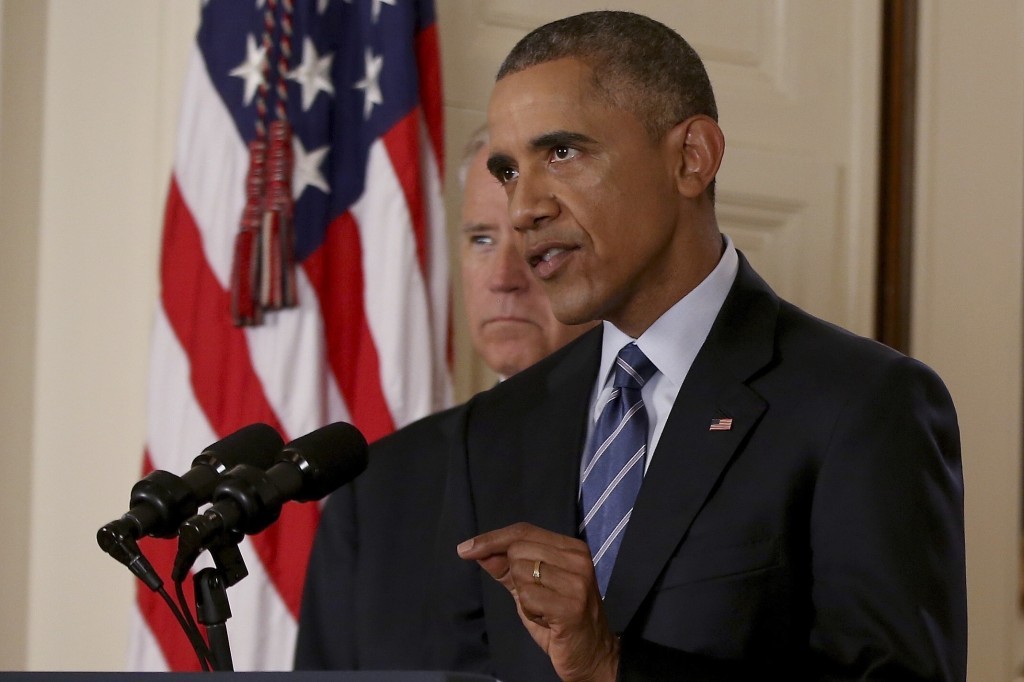
You may not have noticed it, but the planet was saved this week.
The Keystone XL pipeline, hailed by environmentalists as the single greatest threat to the future of the world, died a death far quieter than the political rhetoric that had long enveloped. The process was seven years old.
The company behind it, TransCanada, asked the U.S. State Department to stop review of its application for the pipeline to cross the U.S.-Canadian border. The government rejected the request so that the White House could formally deny the permit a few days later.
TransCanada’s chief executive, Russell Girling, has said he still believes there’s both a need and a demand from Canadian producers to ship oil through the pipeline. But the decision was greeted with a collective shrug from the rest of the oil industry. In its final years, politicians and environmentalists found Keystone far more than useful than oil producers did.
U.S. oil imports from Canada have been rising without Keystone, setting a record in August with an average of 3.4 million barrels a day, according to data from the U.S. Energy Information Administration. The Wall Street Journal noted that the U.S. has bought 64 percent more oil from Canada so far this year than in 2008, the year TransCanada first applied for government approval for Keystone. That’s an increase of about 1.2 million barrels a day.
Much of that oil is moving through other pipelines. TransCanada competitors, such as Enbridge Energy Partners, have stepped up capacity for exiting pipelines that didn’t require the regulatory slow dance with the U.S. government. And, of course, more oil is being shipped by rail car than ever before – about 1 million barrels a day, up from essentially zero five years ago.
The oil industry long ago decided it couldn’t wait on the Obama administration’s foot-dragging, and the overwrought environmental opposition meant that decisiveness was unlikely to strike the State Department any time soon.
To be sure, the nail in Keystone’s coffin was the precipitous decline in crude oil prices, which has halted development of new oil sands reserves in Canada and called into question future demand for a new pipeline.
What’s stunning about Keystone’s defeat, though, is the lengths to which the environmental community went in its opposition. The Sierra Club, for example, as recently as January suggested that cheap Saudi imports might be “the best ally” in the fight against Keystone. Such a calamity was the mere prospect of the pipeline that a flood of cheaper, carbon-spewing crude from the Kingdom was preferable.
Tom Steyer, the billionaire fossil fuel profiteer turned environmental evangelist, was the public face of Keystone opposition and spent $74 million on the 2014 elections, much of it focused on candidates who opposed the pipeline.
And Robert Redford, the erstwhile Sundance Kid, once billed Keystone as “one of the most nightmarish fossil fuel projects of our time.”
For all the environmental fear-mongering swirling around Keystone over the past seven years, its defeat is a Pyrrhic victory for its opponents. More oil than ever is moving into the U.S. from Canada, environmental disasters from oil train derailments are a growing concern, and BP recently released a study showing that technology, such as hydraulic fracturing, will boost global oil reserves by two-thirds through 2050.
Meanwhile, Steyer, Redford and their ilk have moved on. The protest premium for Keystone has been waning, and new fears, with fresh fund-raising opportunities, have emerged – drilling in the Arctic, proposed drilling off the eastern U.S. coast, and of course, that old standby, fracking.
At the grassroots level, though, pipeline protests remain all the rage. Bloomberg News reported recently that pipeline companies now face a new wave of opposition, even for natural gas lines. Natural gas, by the way, has about half the environmental impact of the Sierra Club’s ally, Saudi crude.
The Keystone fight has emboldened “professional protesters” who embrace the same fundamental philosophy – if you can call it that – on which the Keystone opposition was built: if you shut down a single mode of transportation you will reduce demand for fossil fuel.
The strategy not only doesn’t work, it can actually shows a callous disregard for unintended consequences. Keystone opponents may have stopped the pipeline, but their actions have actually increased the threat to the environment by forcing more oil to move on trains or, in some cases, by tankers.
Economics and consumer preference are against them. The rising imports from Canada underscore the point that protesters in trees blocking pipeline construction won’t curb demand for fossil fuels.
It may, however, make pipelines more expensive and more troublesome to build and thus encourage less safe modes of transporting fossil fuels. Killing Keystone may have created a greater environmental threat than building it. That, in the end, is likely to be Keystone’s legacy.
Loren Steffy is a managing director with the communications firm 30 Point Strategies. He is a writer at large for Texas Monthly and the author of Drowning in Oil: BP and the Reckless Pursuit of Profit and The Man Who Thought Like a Ship. Follow him on Twitter: @lsteffy; on Facebook or at lorensteffy.com.